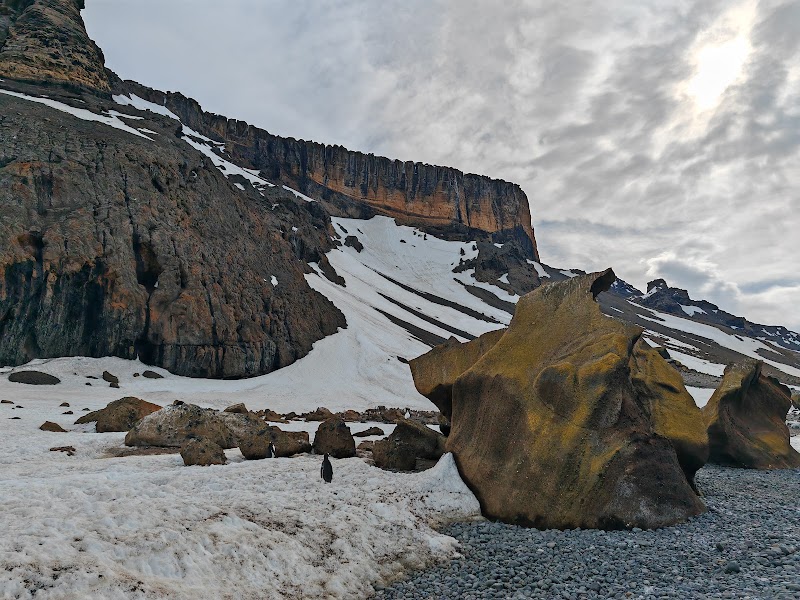
Antarctic Treaty System Adventures
The Antarctic Treaty System is a pioneering international agreement dedicated to preserving the continent of Antarctica for peaceful and scientific purposes. It uniquely balances environmental protection with international collaboration.
Popular Activities
A Journey Through the Heart of the Antarctic Treaty System: Exploring the Last Great Wilderness
Imagine embarking on a voyage to the southernmost reaches of our planet, an unyielding expanse of ice and mystery known as Antarctica. Here, amidst towering glaciers and sprawling ice fields, lies an extraordinary story—the Antarctic Treaty System. This remarkable agreement, forged amidst the backdrop of the Cold War, means that this pristine land is preserved for peace and scientific inquiry, untouched by military ambitions or territorial disputes.
As you prepare to explore not just the ice underfoot, but the very principles that guide the stewardship of this wilderness, understand that the Antarctic Treaty System is more than legal jargon; it's a manifesto of collective responsibility. With its inception in 1959, a coalition of nations embarked on a monumental endeavor to ensure that this fragile ecosystem remains safeguarded for generations to come. Their collective voice, echoing in the robust agreements that form the treaty, champions the cause of cooperation in scientific research and environmental protection.
For adventurers drawn to this remote destination, the promise of infinite horizons comes with a practical edge. Crafting a successful journey in Antarctica requires meticulous planning and preparation. Tall tales of adventure aside, the realities of this rugged environment demand respect and readiness.
Begin your expedition by understanding the logistics. Most trips will be organized through experienced operators, often embarking from Ushuaia, Argentina, on the southern tip of South America. The journey across the Drake Passage is not for the faint-hearted, crossing a sea renowned for its rugged conditions. However, as the boat approaches the icy continent, prepare to be awestruck—massive icebergs bob in frosty waters, each one a unique work of art, sculpted by nature.
Opt for an expedition that balances adventure with education, as these tours typically include expert guides who can explain the significance of the treaty system and its implications for conservation. As you step onto the white continent, every crunch of snow beneath your boots whispers stories of the scientists who have worked tirelessly to unlock the secrets of climate history contained within the ice.
Timing your visit is crucial. The Antarctic summer runs from November to March, offering the warmest conditions for exploration. Dress in layers and ensure that your gear includes waterproof boots, thermal layers, and windproof jackets, as the weather can shift unexpectedly. Hydration is vital; the dry air can be deceivingly thirst-inducing. Always pack enough water or means to purify ice.
As you venture forth, the vistas are nothing short of awe-inspiring. Imagine towering peaks stretched across the horizon, punctuated by the occasional feeding seal or the majestic glide of penguins. The air is crisp, invigorating, and imbued with a sense of pristine peace that seems to quiet even your thoughts. The vastness of the landscape can feel overwhelming, yet it also invites introspection; here, civilization feels distant, and the whispers of scientific discovery resonate louder than ever.
Keep your eyes peeled for the effects of climate change on this untouched expanse. Ice shelves are rapidly retreating, a pressing reminder of the challenges faced across the globe. By witnessing these changes firsthand, adventurers are not only participants in the beauty of this land but also guardians of its conservation story.
Your experience in Antarctica shouldn't just be a fleeting visit to a land of ice. Instead, let it foster a sense of wonder, a call to arm you with knowledge about global stewardship. Engage with fellow explorers, share stories, and discuss the vital role of international cooperation enshrined in the Antarctic Treaty System—it's a narrative as rich as the landscape itself.
So, equip yourself with the knowledge and tools you need, and set out on this journey of not just exploration, but understanding. As you traverse this last great wilderness, let Antarctica’s icy expanse teach you about resilience, conservation, and the importance of harmony with nature. Together, we can advocate for a future where such places remain pristine—forever awe-inspiring, forever wild.
Plan Your Visit
Everything you need to know to prepare for an unforgettable trip to Antarctic Treaty System.
Entrance Requirements
All visitors require permits; managed by national Antarctic programs.
Best Time to Visit
Visitation is primarily during the Antarctic summer months, November to March, due to milder weather.
Visitor Information
Research stations serve as centers for limited visitor interaction.
Getting There
Access is typically via ship or, irregularly, by air; there are no formal roads.
Weather & Climate
Antarctica's climate is the coldest on Earth, with summer temperatures ranging from -20°F to 20°F. Winters can plummet to -70°F or lower.
Conservation Efforts
Climate change presents significant challenges, impacting ice melts and ecosystem health. Human activity is highly controlled to minimize disruptions.
Camping in Antarctic Treaty System
Find the perfect spot to stay overnight and immerse yourself in the details.
Top Trails
Observation Hill Trail
Offers panoramic views of the McMurdo Station and surrounding ice scape.
Trailblazer Tips
Visitors should ensure their presence is eco-friendly and comply with strict environmental protocols.
Antarctica experiences polar seasons; travel mainly occurs between November and March.
All visits require permits, which are regulated under stringent international guidelines.
Special gear such as insulated clothing and UV protection is necessary due to extreme weather conditions and high sun exposure.
